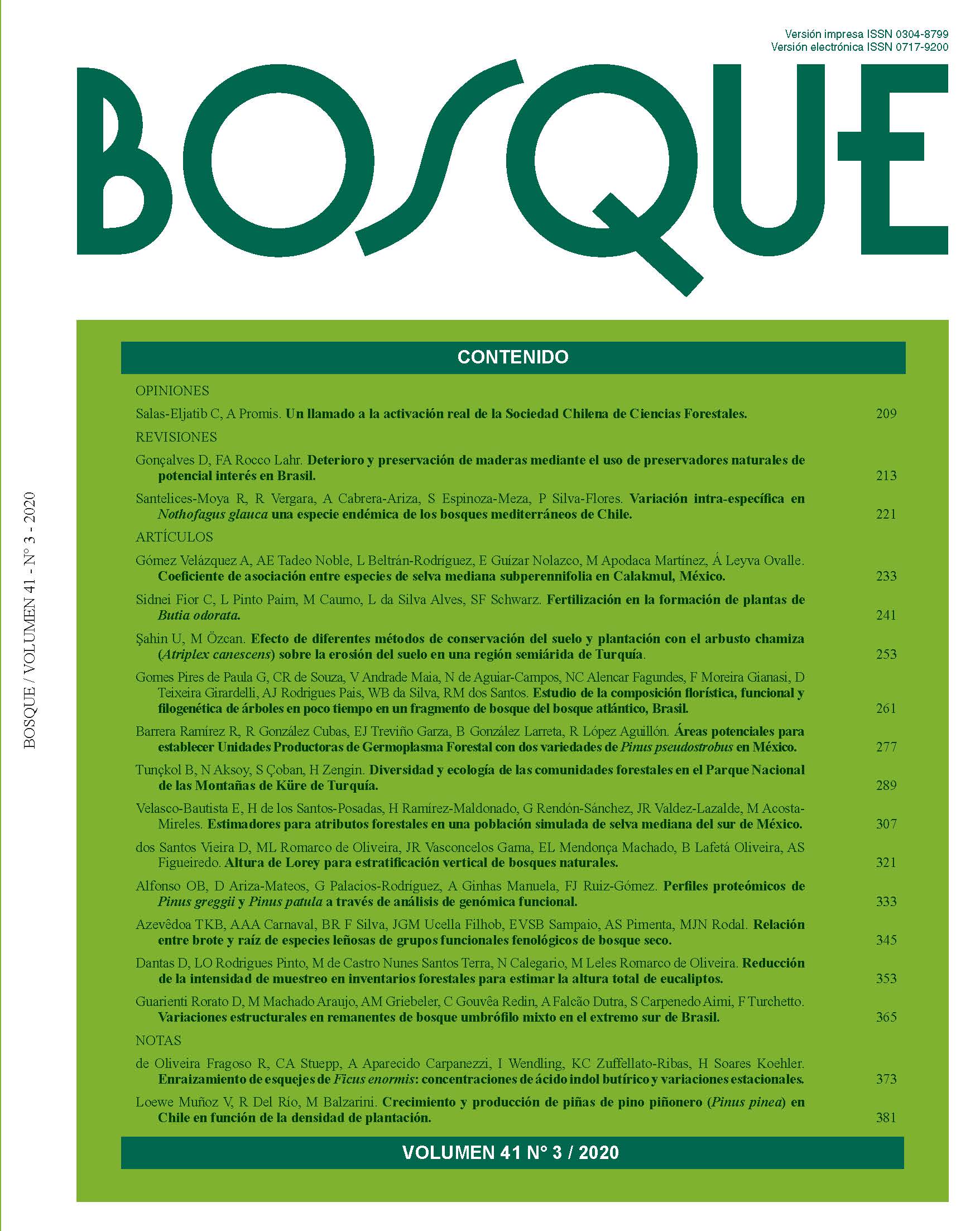Seed protein profile of Pinus greggii and Pinus patula through functional genomics analysis
Main Article Content
Abstract
The present work was carried out with the aim of analyzing and describing the seed proteome of Pinus patula and Pinus greggii. The analysis was performed using the "shotgun" ("gel-free") strategy. Proteins were extracted using the TCA/Phenol/Acetone protocol, subsequently separated by liquid chromatography and analyzed by mass spectrometry (nLC LTQ Orbitrap). Protein identification was performed by consulting the specific database for Pinus spp and functional classification taking into account the three functional terms (biological processes, cellular components and molecular functions) of Gene Ontology. To extract relevant Gene Ontology terms, a singular enrichment analysis (SEA) was performed, the terms were considered relevant for a minimum threshold of significance FDR < 0.05. After analyzing protein profiles, a total of 1091 proteins were identified, 362 proteins common in both species, 100 exclusives to P. greggii and 267 exclusive proteins to P. patula. The comparative analysis of the distribution of proteins as a function of the three functional terms reveals similarity between the two species. The most abundant proteins were associated with oxidation-reduction processes, in terms of cellular components; in both species integral membrane proteins predominate. Regarding molecular function, the predominant expression of proteins in both species was related to ATP synthesis. The metabolic pathway with the highest participation of proteins (17 in P. greggii and 19 in P. patula) was the glycolysis/gluconeogenesis pathway. These results demonstrate that there is little genetic variability between the two species, with proteins associated with metabolic processes prior to germination prevailing.

